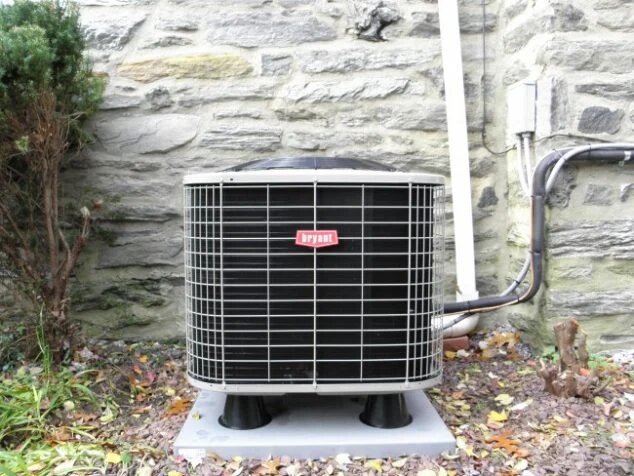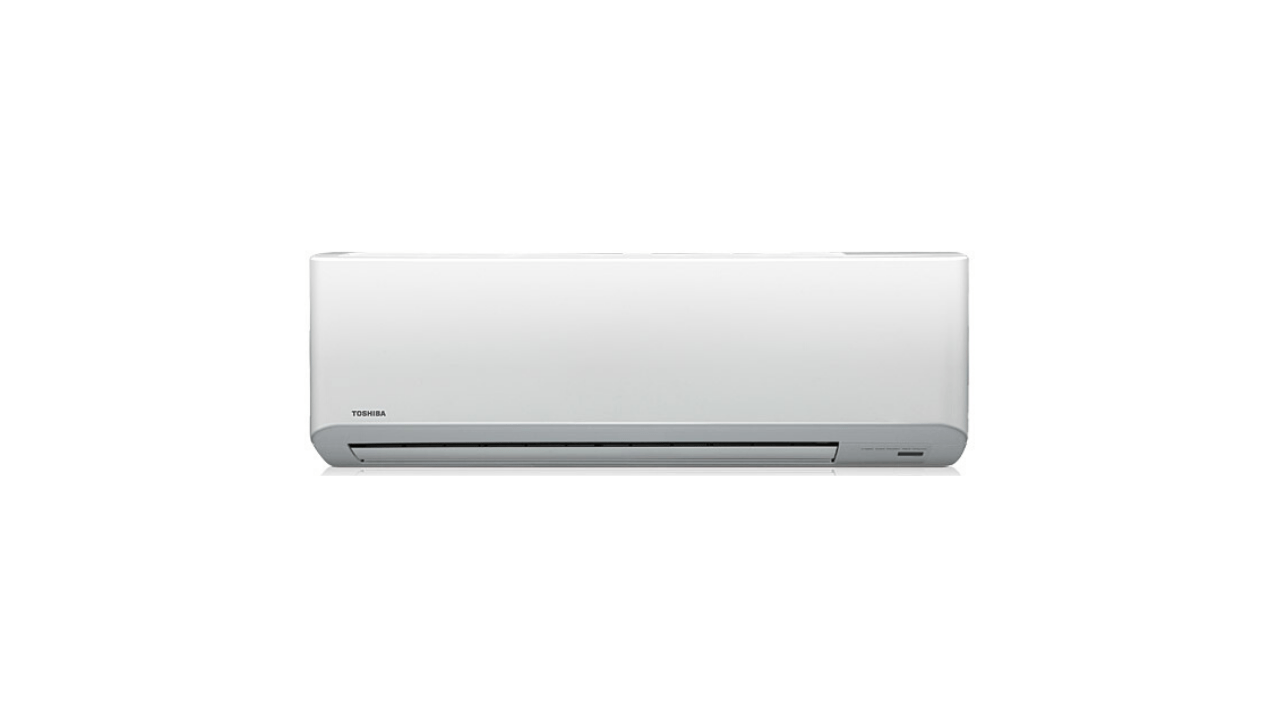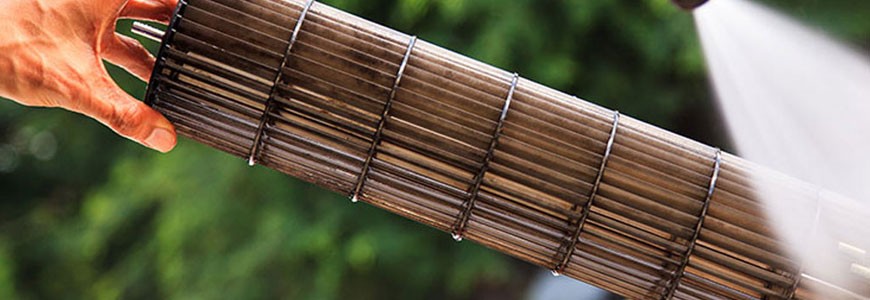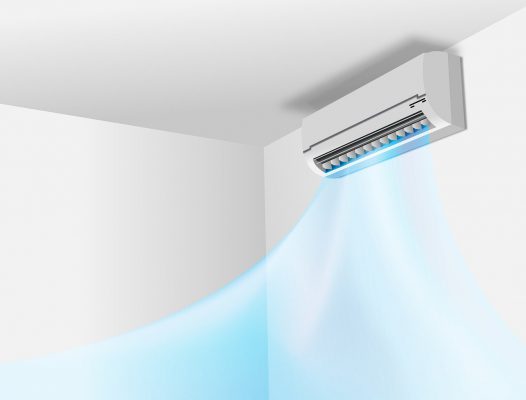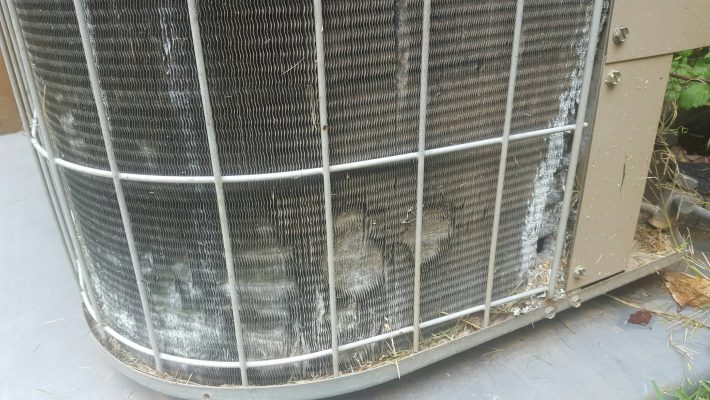On This Page:
- Professional Air Conditioner Maintenance – Learn the Basics
- 7 Maintenance Tips
- DIY Maintenance & Cleaning – What You Can Do
- Window/Room AC Units
- AC Glossary
When cold weather turns warm, it feels nice. When warm weather turns hot, it might not feel so pleasant. You can always go for the comfort of your air conditioner, but if it isn’t working, you’ll end up feeling the heat. The good news is that there are simple things you can do to help keep your AC in top shape.
Professional Air Conditioner Maintenance
You should have your air conditioner serviced regularly before the start of the warmer weather. A professional will come out to inspect and service your AC. This keeps things in running order and helps spot potential trouble. It costs around $125.00 to $175.00 and can save you thousands in repair or replacement costs.
The technician will give the unit an overall inspection, looking for any signs of trouble. They will test the voltage, inspect the condition of the belts, vents, and ducts, check the refrigerant, and examine the drainage lines. They should also lubricate any ports that may be present.
They will inspect the blower motor and test the thermostat to ensure proper operation. A motor that is drawing too many amps may be about ready to fail completely. A thermostat that doesn’t engage the unit when it’s supposed to could need adjustment or replacing.
You should check the air filter every month. The technician will check it as part of the servicing. They should also clean various parts like the compressor, condenser, evaporator coils, air handler, and drainage line.
Finally, they should test refrigerant levels and observe AC function through a complete cycle. If any problems are still present, they should let you know and recommend repairs.
How much does it cost to recharge an AC with the help of a professional? Check our AC Repair Guide for average figures.
7 Tips for Maintaining Your AC Unit
1) Change your filter.
The simplest and most effective way to keep your AC running smoothly is changing your filter once a month. By regularly changing your filter, you reduce a lot of the burden on your system. A dirty or clogged filter makes your air conditioner work much harder than does a clean filter. Changing your filters regularly is easy on your budget and easy on your system as well. It will lower your utility bill and extend the life of your AC.
2) Keep your coils clean.
The AC coils and fins on the outside of your unit need to be kept clean and clear of obstructions. Leaves and other debris sometimes accumulate around your unit. If obstructions are present, your unit must work harder to function than it should. You can clean your unit with a regular garden hose and a broom. Do not use a pressure washer, as the strong spray could cause harm to your system. A little bit of housekeeping in this regard goes far toward keeping your air conditioner working optimally.
3) Keep surrounding shrubbery trimmed.
If you have planted shrubbery around your unit to hide it from view, be sure to leave adequate space around it for the unit to function without obstruction. A quick trim will do the trick.
4) Ensure your dryer vent is not angled toward your AC unit.
Lint from your dryer exhaust can cause problems for your unit. Ensure that lint cannot get inside the vents of your air conditioner by simply angling your dryer vent elsewhere.
5) Adjust your thermostat.
If you are away for long periods every day, adjust your thermostat to a higher temperature for the time you are away. This will lessen the amount of time your unit has to work each day and will lengthen its life cycle. An additional benefit will be a lower utility bill each month. Some newer thermostats allow you to pre-program your thermostat to match your schedule so that your home will still be cool when you arrive. Optimizing your system’s usage will maximize its life in the long term.
6) Check your ductwork and seal open spaces.
Make sure all your doors and windows are properly sealed to help keep your home cool. Perform a visual inspection of your ductwork occasionally to be sure it is sealed correctly. If the ductwork is not properly sealed, cool air will escape before getting into your home. The less cool air that escapes your home, the less your unit will have to work.
7) Schedule an annual tune-up with an HVAC professional.
A trained HVAC technician can detect most problems before they become major ones. With a cost of around $100 for a routine maintenance call, the benefits will likely outweigh the costs by a considerable margin. A typical tune-up will include various tests to ensure your unit’s internal parts are functioning correctly, as well as a filter check, and a refrigerant charge if needed. Your technician will likely also clear the drain, and clean your unit thoroughly inside and out.
DIY Maintenance and Cleaning
You can do some basic maintenance yourself. Here is what to expect:
- Cost: $50.00 to $100.00
- Time Needed: Less than half a day
- Tools and Materials:
- Screwdriver or wrench
- Wet/dry vacuum ($50.00)
- Garden hose
- Butter knife or fin tool ($10.00)
- Rake and/or pruning shears
- Level
- Shims if necessary
- Foil tape ($17.00)
- Soft bristle paint brush ($1.00)
- Coil cleaner ($5.50)
- Hot, soapy water
- Bleach
Before You Begin
Turn off the power to the unit. Turn the condenser switch to the “off” position. At your home’s breaker box, turn off the breaker. You don’t want it turning on while you have your hands near the fan blades!
Outside
- Clean the condenser. If your condenser is on the roof, there probably won’t be much to clean. If it’s at ground level, you’re more likely to have debris. Remove the grate over the fan and vacuum any debris found inside. With a garden hose, spray the fins from the inside out. (Never use a pressure washer. The fins are very thin and can damage easily.)
- Inspect the fins. They are very thin and bend easily. If you see damaged spots, like where the fins are flattened, straighten them gently with the butter knife or fin tool. Be careful not to damage the tubing within the fins.
- Rake any ground-level debris away from the condenser and prune any branches or bushes away at least two feet.
- Level the condenser. As soil settles, it’s not unusual for the condenser pad to get off-level. Using shims and the level, you can bring the condenser back to a level position.
Inside
- Clean the evaporator coils. These should be behind a door above where the blower motor is. It might be sealed with foil tape. Open the cover and use the soft paint brush to dust off the coil. Next, spray the coil with coil cleaner, letting it drip into the drain pan. Afterwards, clean the drain pan with soap and hot water. (Adding a drain pan tablet to the pan can help prevent algae growth and costs about $3.50 for a pack of 6.) Make sure the drain flows freely. If it does, you can skip the next step.
- Clean the evaporator drain. This is usually a 1-inch PVC pipe coming off the evaporator enclosure. Follow it to where it drains out. Attach the wet/dry vacuum to this end, sealing it with duct tape or with a rag. Remove the vacuum’s filter to avoid damaging it and turn the vacuum on for 2-3 minutes to clear out any blockage.
- Change the filter. This should be done twice a year on heating/cooling systems; once at the start of the cooling season and once at the start of the warming season.
- Turn the power back on and let it go through a full cycle. If it’s not cooling like it used to, it’s time to call a pro.
This whole project should cost around $50.00. Even if all you can do is change the filter, doing it regularly will save about 15% on your cooling bill. But whether you spend $50.00 to $100.00 to do it yourself or if you spend $125.00 to $175.00 to hire a pro, it’s cheaper than paying several thousands of dollars repairing or replacing your AC.
Window/Room Units
Maintenance on window or room ac units is a lot less intensive because there are fewer moving parts.
- Unplug the unit.
- Remove front plate and vacuum the coils with a soft brush attachment. If you take the unit outside, you can hose them off if you take care not to get the motor or electronics wet.
- Inspect the cooling fins and straighten them out with a fin tool.
- Check drain pan for rust or algae, or check drain pipe for blockage.
- Check the filter. If it’s damaged, replace it. If it’s just dirty, you can wash it. Let it dry before replacing it.
AC Glossary
The specifics of an air conditioning unit can vary widely. There are some parts that all units have in common, though:
- Furnace – This is where the air gets drawn in to be sent through the system to be warmed or cooled as the unit operates.
- Heat Exchanger – If your unit heats as well as cools, the heat exchanger is where the cold air is warmed up before being blown out to the ducts.
- Evaporator Coil – This is similar to the heat exchanger except that it cools the air.
- Condensing Unit – This is the big box outside. The refrigerant gas is condensed into liquid form and sent through the evaporator coil where it gets turned back into a gas that cools the air. The gas then returns to the condenser and the process begins again.
- Refrigerant Lines – These are aluminum or copper tubes that run through the system carrying the refrigerant gas. If one of these springs a leak, a professional will be needed to fix it.
- Thermostat – The thermostat is the control to set the desired temperature. Some elaborate systems can control the temperature in specific areas of your house.
- Ducts – The ducts are the pathways that the air is pushed through to get into the rooms. They are usually installed during construction of the building.
- Vents – Vents are the openings for the air to pass through into your rooms. Many have louvres that allow you to direct the air or close it off entirely.
Regular maintenance and cleaning of your AC unit will not only save you hundreds (or thousands) of dollars, it will keep you from an unexpected break down that will leave you sweating.

